Figures
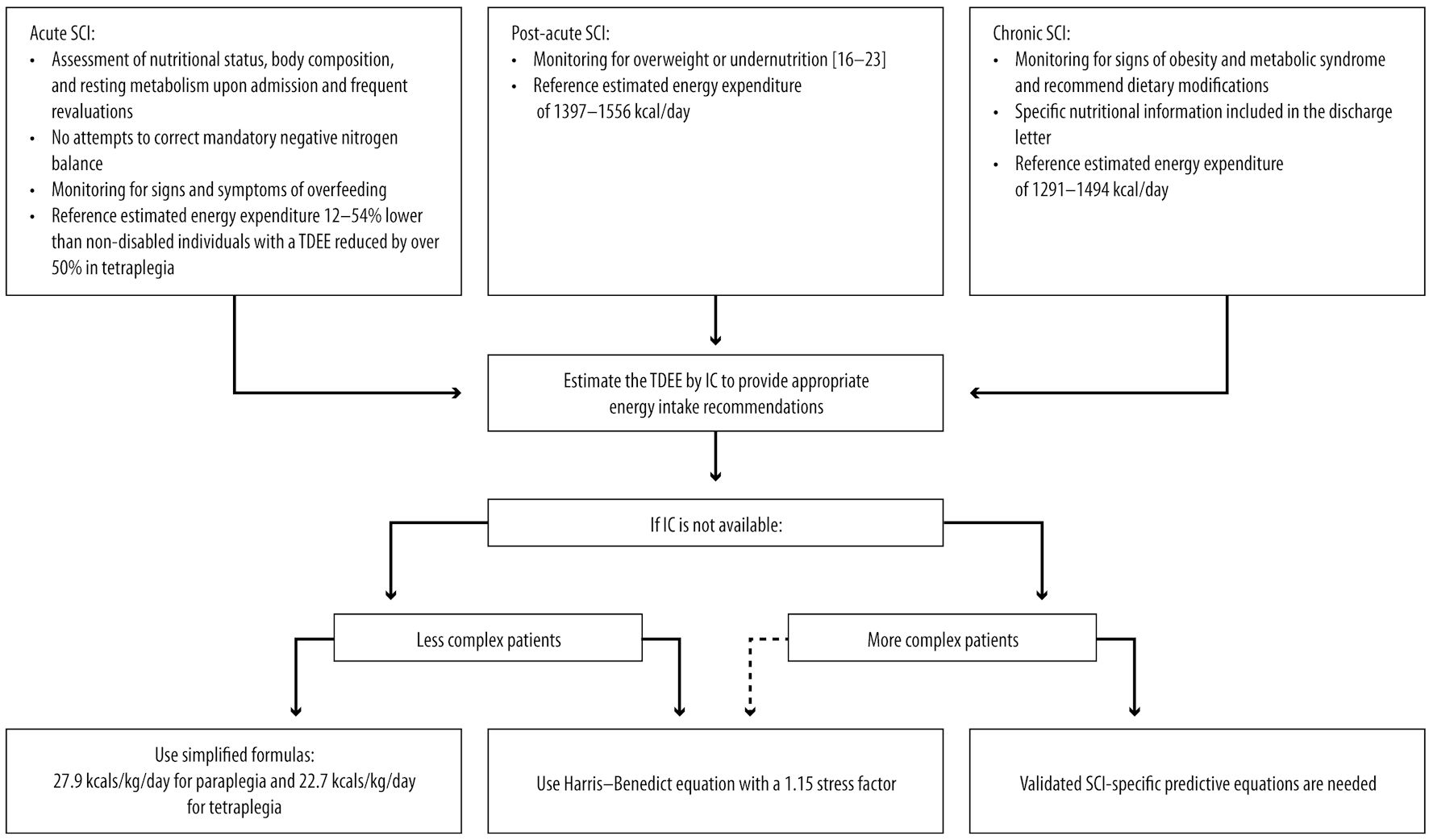
Figure 1. SCI: management considerations for nutritional assessment and energy needs. SCI: spinal cord injury; TDEE: total daily energy expenditure; IC: indirect calorimetry.
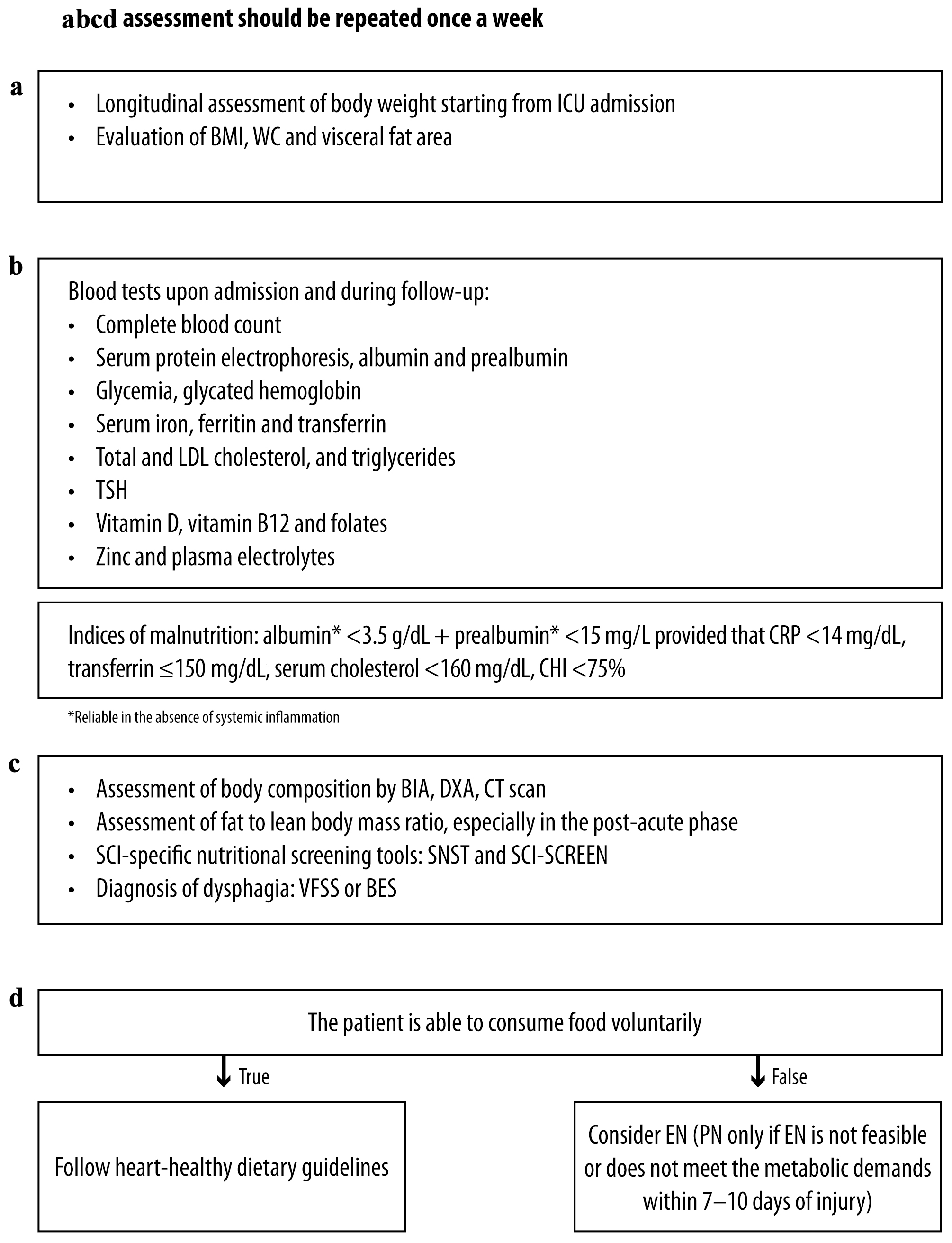
Figure 2. Acute and post-acute SCI: management considerations for (a) anthropometric, (b) biochemical, (c) clinical and (d) dietary assessment. (a-d) Assessment should be repeated once a week. TSH: thyroid-stimulating hormone; BMI: body mass index; ICU: intensive care unit; CRP: C-reactive protein; CHI: creatinine height index; LDL: low-density lipoprotein; DXA: dual X-ray absorptiometry; BIA: bioelectrical impedance analysis; CT: computerized tomography; SNST: spinal nutrition screening tool; BES: bedside swallowing evaluation; VFSS: videofluoroscopic swallow studies; EN: enteral nutrition; PN: parenteral nutrition; WC: waist circumference.
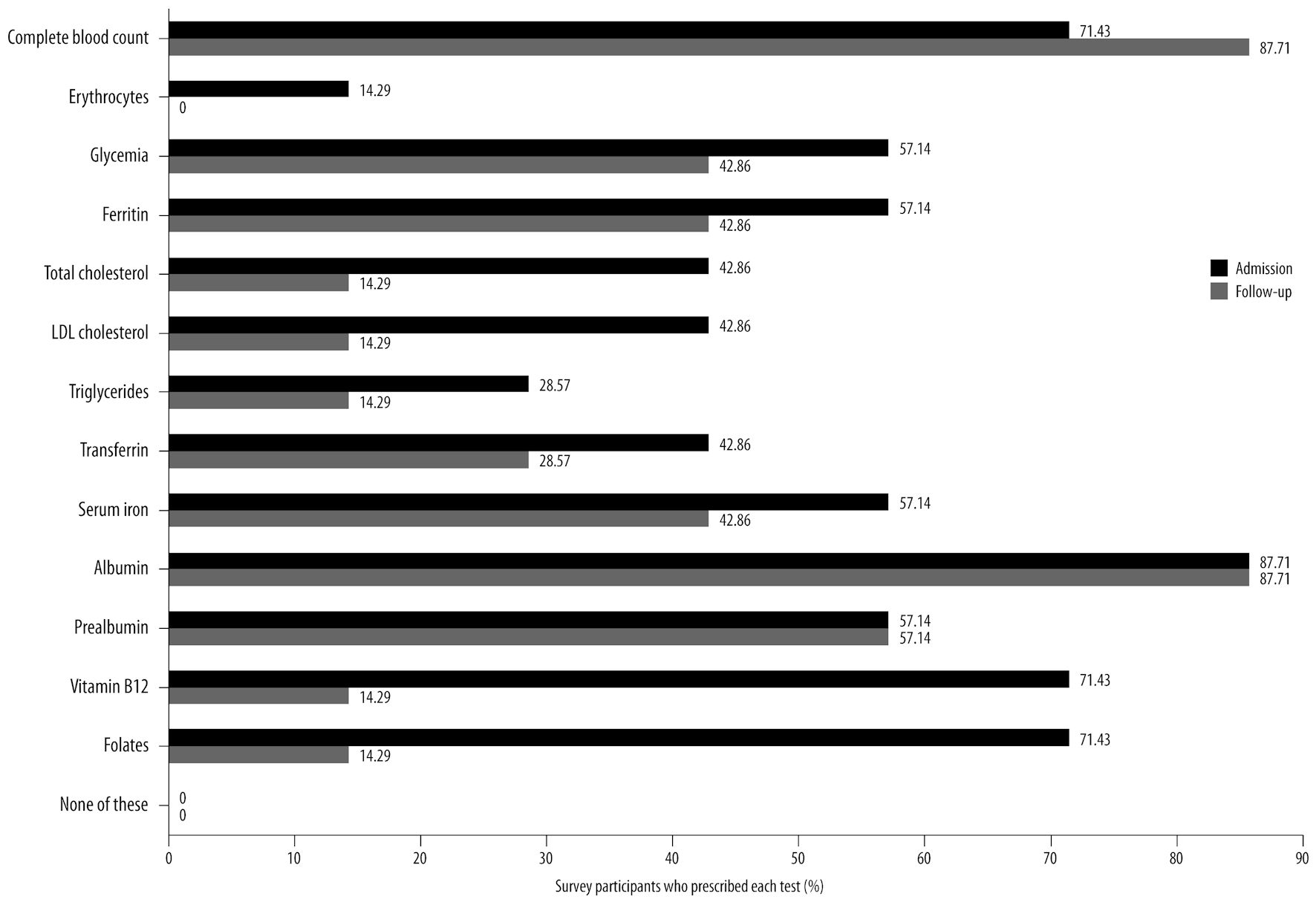
Figure 3. Blood tests commonly prescribed by the panelists upon hospital admission and during follow-up of acute patients with SCI, based on survey results, along with the corresponding percentage of survey participants who prescribe each test. SCI: spinal cord injury; LDL: low-density lipoprotein.
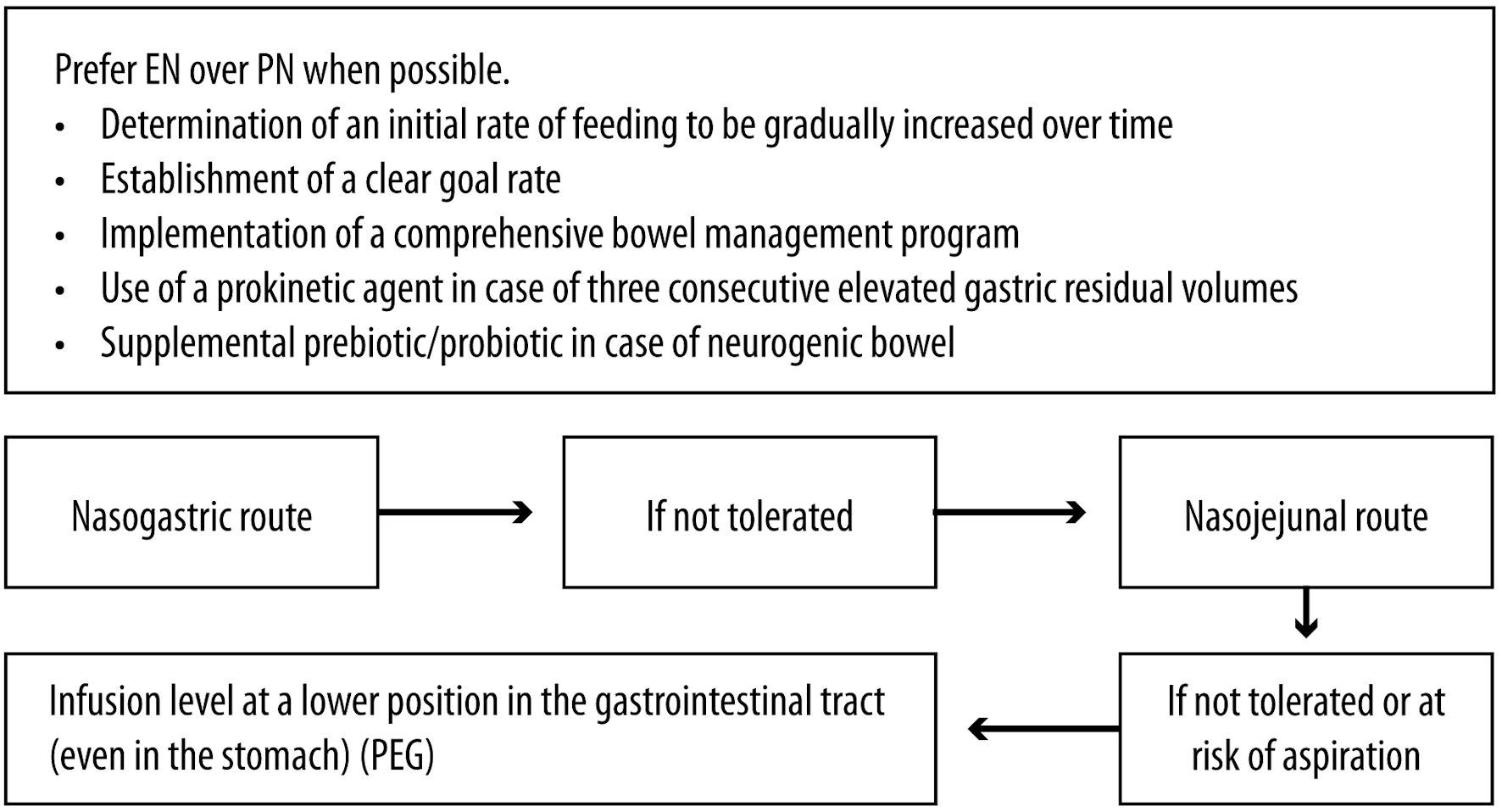
Figure 4. Acute SCI: management considerations for enteral nutrition. SCI: spinal cord injury; EN: enteral nutrition; PN: parenteral nutrition; PEG: percutaneous endoscopic gastrostomy.

Figure 5. Acute SCI: management considerations for parenteral nutrition. SCI: spinal cord injury; EN: enteral nutrition; PN: parenteral nutrition; CLABSI: central line-associated bloodstream infection.
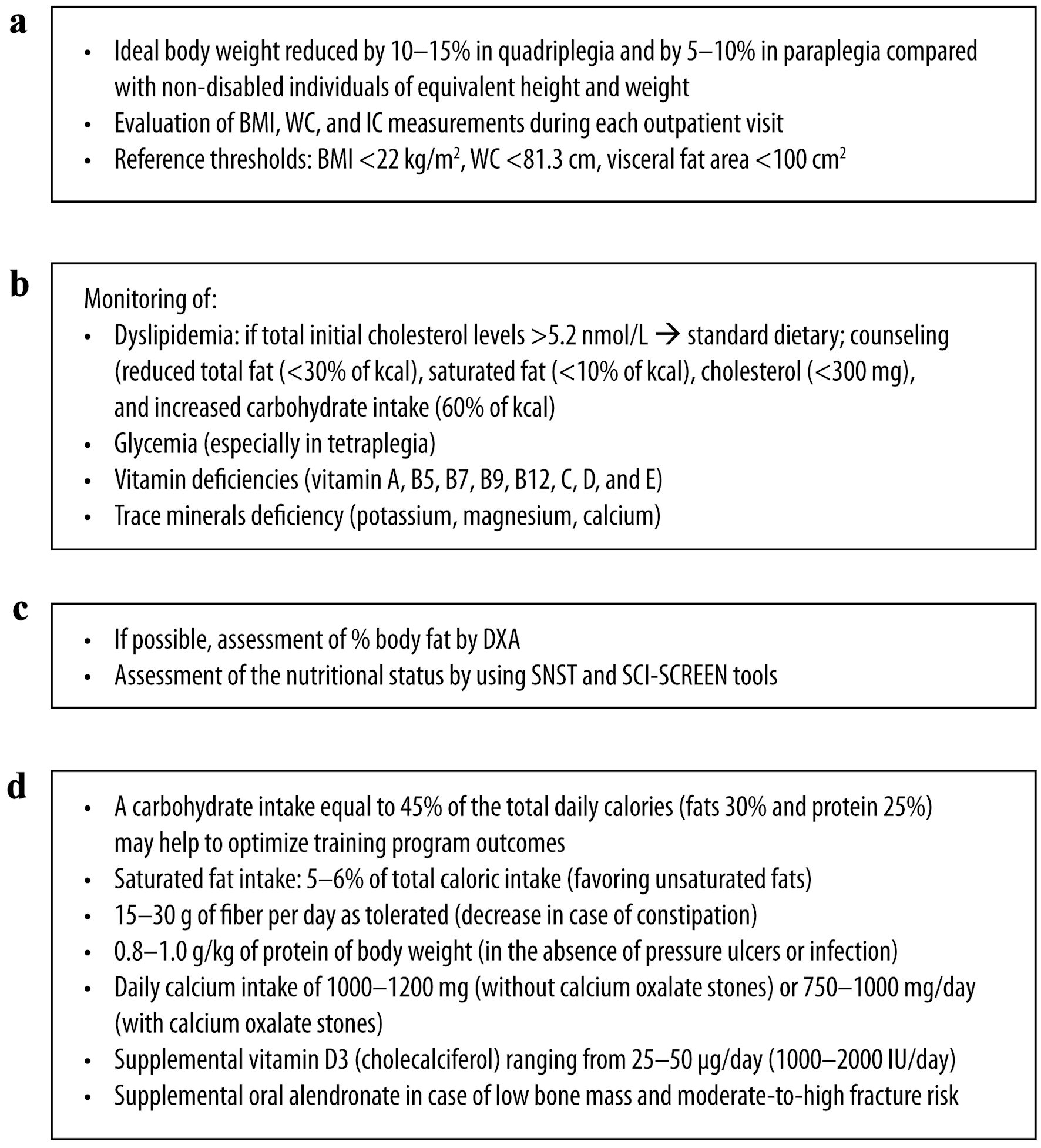
Figure 6. Post-discharge SCI: management considerations for (a) anthropometric, (b) biochemical, (c) clinical and (d) dietary assessment. SCI: spinal cord injury; IC: indirect calorimetry; BMI: body mass index; DXA: dual X-ray absorptiometry; SNST: spinal nutrition screening tool; WC: waist circumference.






